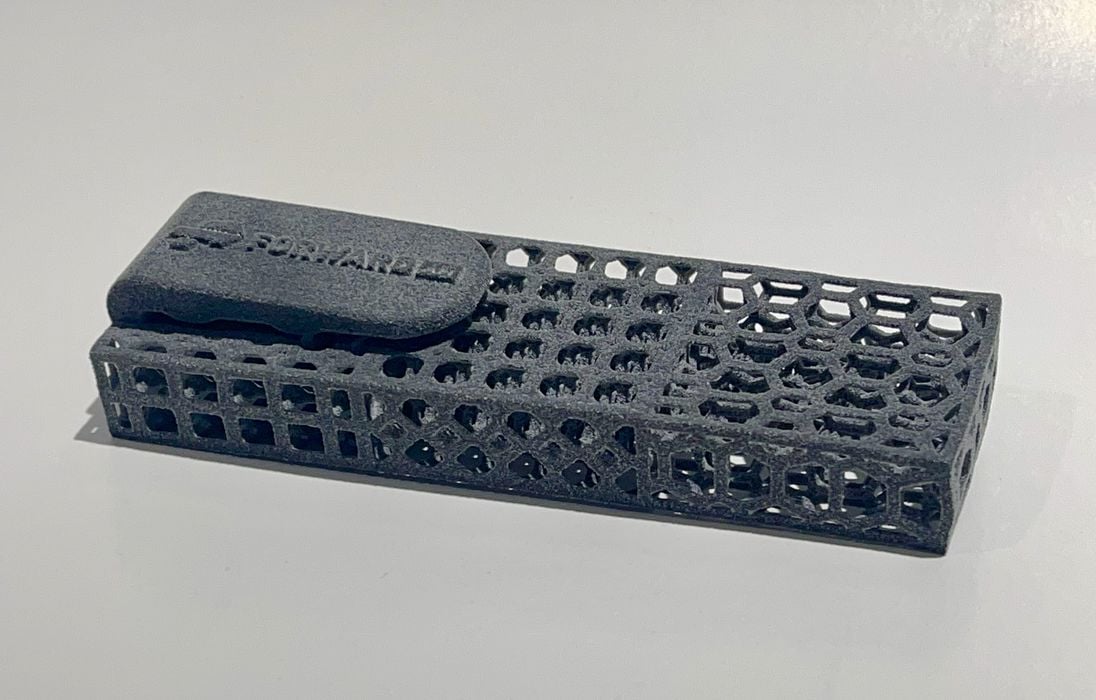
There’s something interesting going on lately in the world of SLS 3D printing.
SLS 3D printing is a powerful technology that can be used to produce end-use production parts in great resolution without the need for support structures. It uses a laser to selectively melt fine polymer powder, layer by layer, to produce 3D objects.
For quite a while there was only one option for SLS buyers: high end, expensive industrial SLS devices. For that reason SLS has been relatively slow to catch on in the 3D print world, as most devices are now FFF or MSLA.
Nevertheless, there has been some activity over the past several years. Sinterit and Sintratec both introduced low cost SLS systems. These systems were operational, but had some constraints on materials due to the low cost.
More recently, Formlabs, an SLA company, introduced the Fuse One, their take on a lower-cost SLS system. It isn’t as cheap as Sinterit’s, but is much more affordable than industrial options.
That has been the stage until the past few months. Then things started to happen.
- Sintratec gave up and went out of business
- Micronics announced a very low cost SLS 3D printer
- Formlabs wholly acquired Micronics before they could release their sub-US$3000 SLS 3D printer
- Sinterit announced a new investment of US$1.85M for increased marketing, research and developing a new machine
What’s going on here? Why is there suddenly all this activity around SLS 3D printer manufacturers?
It seems to me that SLS technology may be on the cusp of a boom. As more companies become accustomed to 3D printing they adopt additional technologies.
Consider the path of inexpensive SLA / MSLA 3D printing: at first hardly anyone used the technology because there were few options and even fewer at reasonable price points. Even the resins were quite expensive. Most of the machines used FFF technology, which is easier to use.
However, operators eventually became familiar with FFF and learned of its limitations. They knew that resin devices could provide superior resolution, but could not affordably access the tech.
Then the breakthrough came with the development of inexpensive MSLA devices around five years ago, which broke through the price barrier. Since then the industry has really taken off, with multiple large companies now selling tens of thousands of MSLA devices. Even Formlabs switched from SLA to an MSLA-like variant in their most recent device, the Form 4.
We’ve seen a corresponding jump in the design world following the resin bump. There are now multiple sites offering complex models for sale specifically for this type of device, and many designers now make a living in that world.
Back to SLS.
We seem to be at the stage where the market seems ready for SLS. We know the limitations of FFF and resin devices, and understand the benefits of SLS. We don’t buy SLS, however, because it’s too expensive.
I believe all it will take to trigger a resin-like eruption for SLS will be the introduction of an inexpensive device, similar to what happened with MSLA. I also think that the SLS 3D printer manufacturers know this.
Let’s look at the events above and think about them in context. Sintratec might have gone out of business because it could not raise money to develop a new device. Micronics could have been making that very device. Formlabs acquired Micronics, either to postpone the shift, or develop the device themselves, or both. Sinterit has raised money to develop a new machine.
Behind all this, however, there’s a dark horse: open source. There is a project, SLS4All, which intends on developing an open source SLS device design. If successful, this could open up many possibilities, just as it did for FFF 3D printing many years ago. Companies could use the open source design to create inexpensive desktop SLS units that could be sold in volume, in addition to individuals building their own SLS systems.
It may even be that the SLS 3D printer manufacturers see SLS4All as a possible trigger for all this to happen. However, there’s a problem: currently the kit price for the SLS4All Inova is US$6,990, which is twice the price of the now-canceled Micronics option.
The jigsaw pieces are in motion, and it’s not quite clear where they will land. My hope is that when the smoke clears we will have a couple of very low cost desktop SLS systems on the market.
